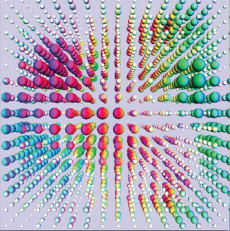Lattice Quantum Chromodynamics
Key Challenges
Although the QCD theory has been extensively tested at at high energies, at low energies or larger distances it has been less sucessful and this has resulted in a series of unanswered questions regarding the very basic characteristics of the nucleus. In fact, one of the great challenges facing nuclear physics is determining the behavior of hadronic matter at densities away from that of nuclear matter, such as those that occur in the interior of neutron stars. Neutron stars are a type of stellar remnant composed almost entirely of neutrons that can result from the gravitational collapse of a massive star during a Type II, Type Ib or Type Ic supernova event.
Why it matters
Protons and neutrons are the basic building blocks from which all nuclei are constructed. But why don't atomic nuclei, with their collection of positively or neutrally charged constitutents, just fly apart? Quantum Chromodynamics (QCD) is helping to answer this question. QCD is the theory of the strong interaction, one of the four fundamental forces in nature, and the one responsible for binding quarks into protons and neutrons and holding them all together in the atomic nucleus. Lattice QCD is the numerical simulation of QCD and it involves evaluating field variables on sites and links of a regular hypercube grid in discretized four-dimensional space-time.
Determining how quarks and gluons form protons, neutrons, and other particles is at the core of frontier nuclear physics. Extreme-scale computing is required to perform ab initio LQCD calculations of the fundamental properties of nucleons, and provide insight into their structure that is inaccessible to experiment.
Accomplishments
A collaboration of QCD scientists recently performed the first full QCD calculation of nucleon-nucleon interactions, and hyperon-nucleon interactions at low-energies with large pion masses. Work performed on 16k cores of the NERSC Cray XT4 system during 2010 provided evidence for an H-dibaryon, a state with valence quark-structure uuddss. This has suggested bound-states in other channels and this very important result will focus future studies at lighter pion masses.
Computations done primarily at NERSC have also provided the first reliable prediction of a two-baryon bound state starting from first principles, albeit at unphysical quark masses. Suggests the possible existence of the so-called H-dibaryon bound state, an exotic nucleus first envisaged in 1977.
Investigators
Martin Savage (University of Washington), William Detmold (College of William and Mary), and others
More Information
See Phys. Rev. D 81 054505 (2010), Phys Rev. Letters 106, 162001 (2011), and the NPLQCD web site.








